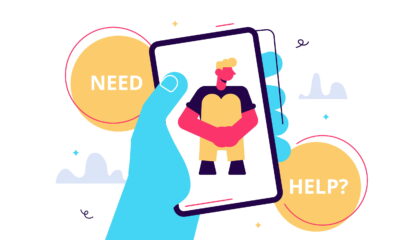

Features
Oura Ring Paves the Way For Eco-friendly Contactless Payments
Sustainability is becoming a greater priority in the healthcare sector than ever before. we previously mentioned that Canada is taking a number of measures to lower the covering footprint of its health care system, but healthcare providers in other countries are doing the same.
There have been a number of discussions about the importance of improving sustainability with medical tourism. However, since most patients see providers at traditional healthcare practices, it is most important for traditional clinics to take the right steps to minimize their carbon footprints.
There are a variety of steps that healthcare providers can take to reduce their impact on the planet. One of the most important things that they can do is to rely more on digital technology come which has a lower carbon footprint and produces less waste than traditional practices that rely on paper. Certain subsections of the healthcare sector are taking new steps to lower their carbon footprint. Mental health providers are among them.
Digital technology is already changing the future of the healthcare industry. The market for healthcare digital technology is expected to be worth $780 billion by 2030. most of the discussions about leveraging digital technology focus on improving patient care. Fewer healthcare providers site sustainability as a priority when investing in digital technology. however, digitization can help on both fronts.
One of the ways that health care providers can lower their carbon footprint is to make it easier for customers to pay their bill digitally. One major company has recently made a lot of progress on this front.
Oura Ring helps healthcare providers lower their carbon footprint through digital payments
Contactless transactions via smart ring could be the next innovation in the payments sector after the company behind Oura Ring acquired the digital identity firm Proxy. These new innovations can make a big difference for health care providers that are trying to be eco-friendlier.
It has been reported that the deal, which is Oura’s first acquisition, gave Proxy a valuation of $165 million and paves the way for the smart ring company to move into the lucrative and eco-friendly contactless payment sector.
Tom Hale, CEO of Oura Health Oy, added to the speculation when he revealed that the acquisition of Proxy would give Oura the opportunity to grow in areas such as payments, security, and identity.
The environmental impact of paper money
Contactless payments give consumers the option to shun cash transactions, an important factor considering the C02 emissions of bank notes. When the Bank of England replaced its paper bank notes with polymer plastic currency in 2016, the central bank of the UK was keen to tout the increased longevity of the new notes and their environmental credentials as they were easier to recycle. However, a study by Evergreen Finance London revealed that in some cases the new bank notes release more C02 throughout their circulation lifespan.
The environmental consequences of paper money have contributed to the popularity of contactless payments as a convenient and simplified way to make payments with the prevalence of smartphone ownership playing a major role in this development.
Cashless payment innovations
Globally, the number of smartphone users is set to enjoy annual growth over the next five years and is forecast to reach a total of 6.2 billion users by 2028. It is not only companies which offer contactless payments that are reaping the rewards. In the iGaming sector, for example, the latest innovation is the ability to deposit by phone bill, offering users a convenient and simple payment method to add funds to their mobile gaming accounts.
The payment option gives customers the chance to deposit either directly from their PAYG credit or to be added to their monthly contract bill. Deposits via phone bill share a number of similarities with contactless payment beyond ease of use and convenience, they are also secure and do not require bank details to be given out with each deposit.
One important drawback
It has already been pointed out that the opportunity to pay via smart ring does have one huge drawback – as yet the Oura device does not possess a screen. But in Proxy the company has acquired a startup with expertise in the field of digital signal technology and with wearable devices proving popular as a way to monitor health and make payments, a solution will not be far away.
Oura can use the example of the smart watch Fitbit as inspiration. After first offering the option of making payments via Fitbit Pay, the Google-owned smart watch now features Google Wallet as a contactless payment option. The opportunity of using tried and tested payment wallets will serve to increase the attractiveness of wearables among consumers.
Contact list payments can make a big difference for healthcare companies trying to be more sustainable
A growing number of healthcare providers are taking steps to be more sustainable. As cashless payments continue to prove popular with customers, the transformation to a cashless society moves ever closer. One of the great environmental benefits of this will be the end of C02-producing bank notes.






























